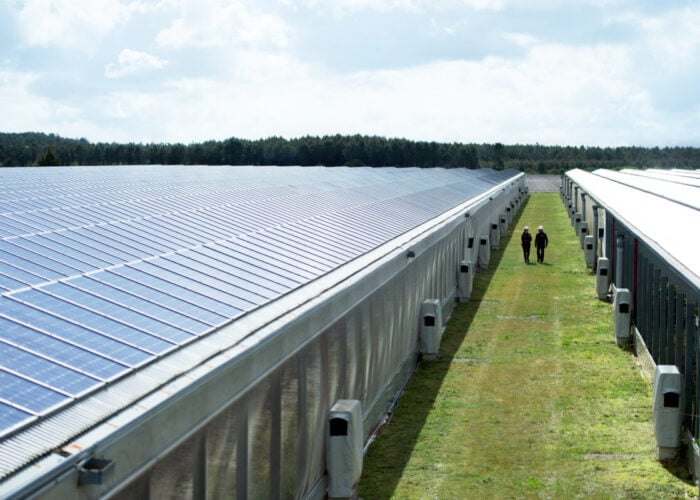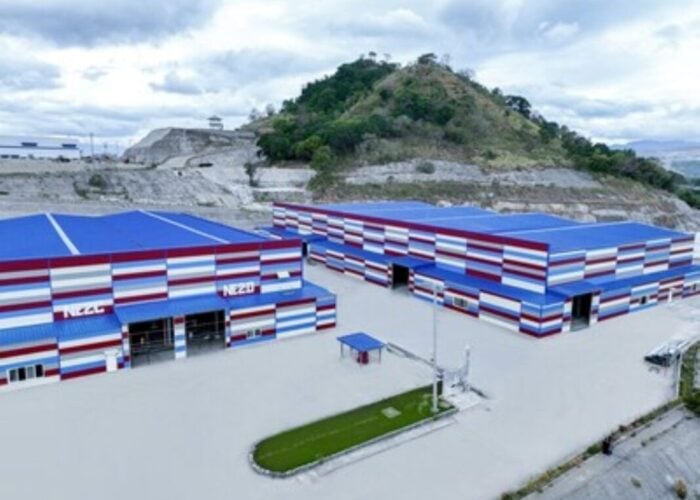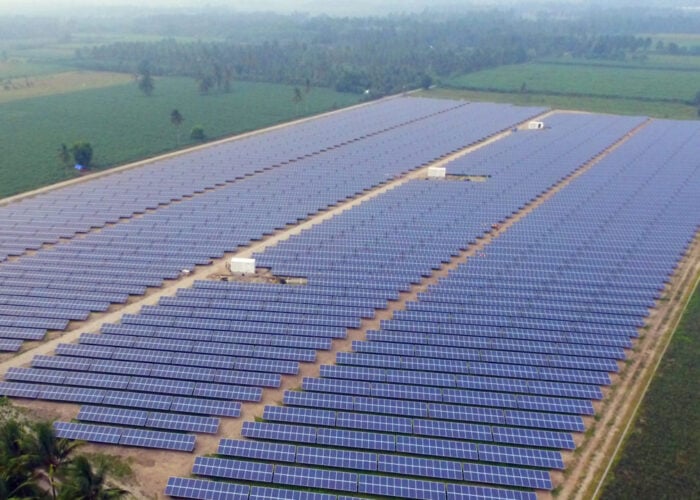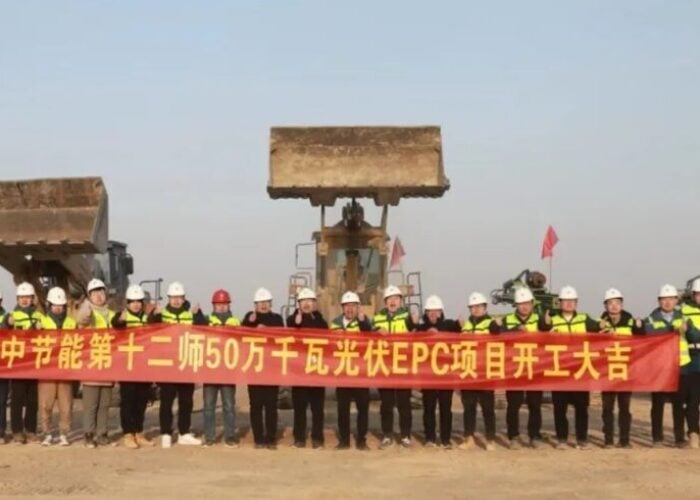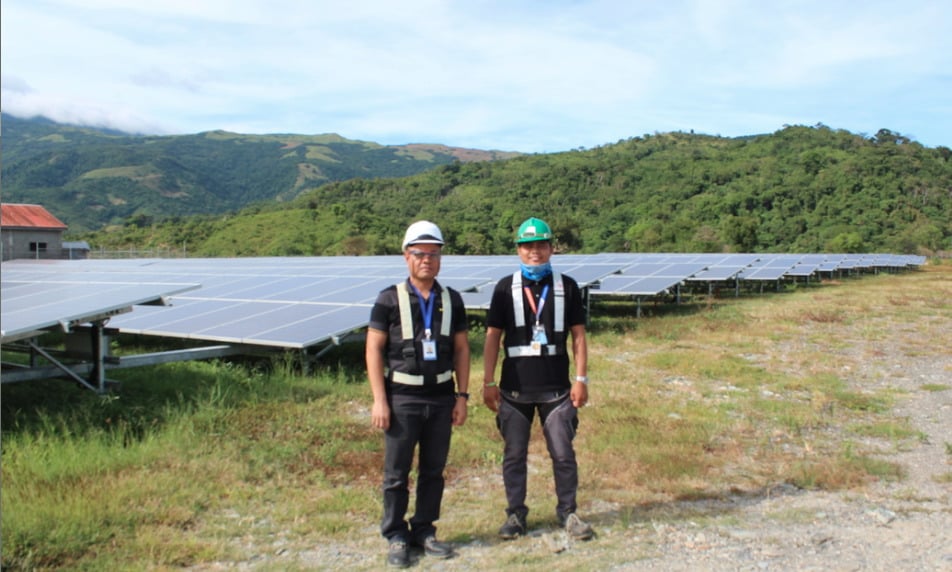
While Filipino policymakers ponder a controversial bill that would allow a solar company to set up a micro-grid and transmission franchise aiming to improve power supply across the country, a small town on the island of Mindoro is already enjoying round-the-clock electricity for the first time ever. The town of Paluan, situated in the northwest corner of Mindoro, the seventh largest island in the Philippines, dominated by an agricultural society and dubbed ‘the brownout capital of the Philippines’, is receiving power from Southeast Asia’s largest micro-grid combining solar PV, energy storage and diesel technology.
The chief of Solar Philippines, the company that developed the project, believes it is also the largest rural micro-grid in the world that is not benefitting from subsidies. Leandro Leviste, the son of Senator Loren Legarda, is making waves in the country’s energy sector with his aggressive expansion of solar development activities in both large-scale and mini-grid segments as well as running the country’s first PV module manufacturing facility.
Unlock unlimited access for 12 whole months of distinctive global analysis
Photovoltaics International is now included.
- Regular insight and analysis of the industry’s biggest developments
- In-depth interviews with the industry’s leading figures
- Unlimited digital access to the PV Tech Power journal catalogue
- Unlimited digital access to the Photovoltaics International journal catalogue
- Access to more than 1,000 technical papers
- Discounts on Solar Media’s portfolio of events, in-person and virtual
Before we weren’t able to store the fish or squid caught from the ocean
However, Leviste has also won some enemies, not just from the incumbent rural electric cooperatives across the country, but even from the solar developer community. Other PV players are threatened by the low prices that Solar Philippines is offering both at large-scale and micro-scale. Indeed, when promoting its plans to set up micro-grids across the country, Solar Philippines has consistently hammered home the point that its projects will be ‘at no cost to government’. Some solar players, however, claim that the House Bill being debated would give an unfair, monopolistic advantage to Solar Philippines in a controversy that is discussed in more detail in a boxout at the end of this article.
For the mini-grid sector, Leviste is knowingly going into loss-making projects, with full belief in the continued downward trajectory of the prices of both silicon and lithium, combined with increasing demand, in such a manner that will make solar PV module and energy storage battery technology more profitable in future projects.
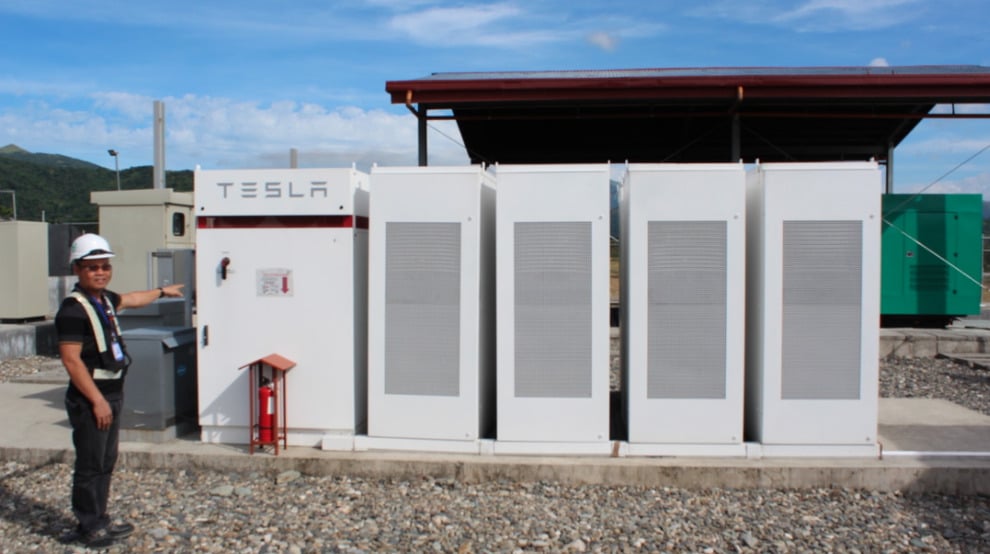
Operating under its solar-battery mini-grid focused entity named Solar Para Sa Bayan (SPSB) – ‘Solar for the country’ – Solar Philippines is supplying power to nearly 3,000 customers in Paluan while slashing the cost of power for commercial entities by half.
It’s a small dent in the race to improve power for the estimated 20 million Filipinos who lack 24/7 electricity and the 12 million who have none at all, but Leviste believes this kind of project will soon become the norm. His vision is that, once well established, micro-grids will not only power the unserved and underserved populations of remote areas and villages in developing countries, but they will also start to creep into supplying towns and even cities.
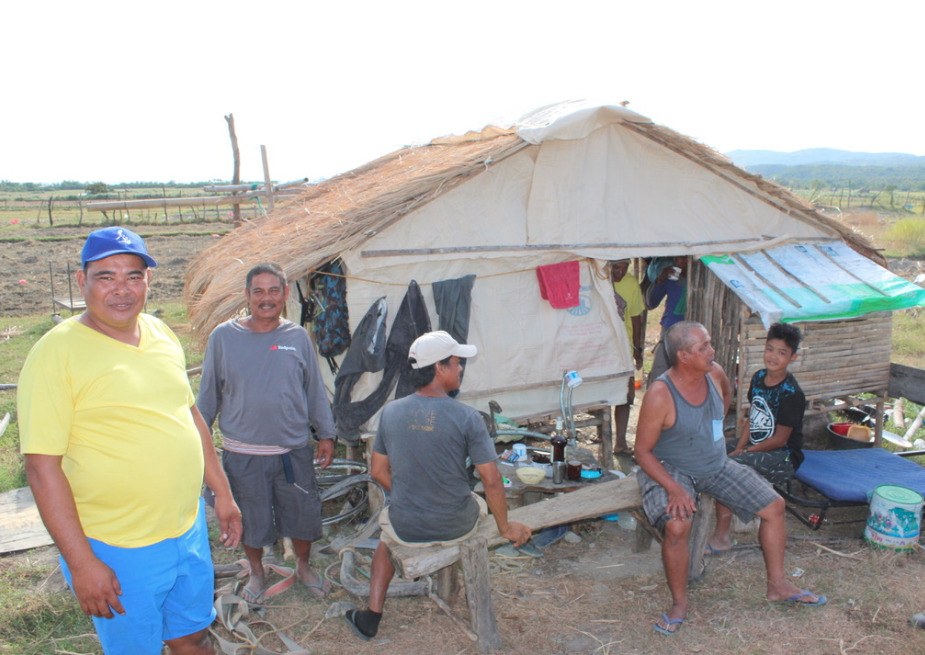
“The problem of the global microgrid industry is that it has limited itself to subsidized projects, which are limited by the imagination of policymakers,” says Leviste. “The only way to make microgrids scale today is to be willing to do unsubsidised, even initially loss-making projects, banking on both growth in demand and decrease in PV-storage costs to turn a profit over time. We're betting our customers in Asia and Africa will one day have standards of living, and thus consumption, at even a fraction of what households in the US and Europe have today, and that our microgrids can help them reach that point sooner, so we're effectively in the business of ending poverty.”
Before the micro-grid was installed, locals in Paluan had just 3-8 hours of unreliable electricity a day and brownouts could last for days. National Power Corporation (NPC) had been running a 5MW diesel plant 30 kilometres away to electrify the area, but difficulty with transmission caused it to stop providing to Paluan around 10 years ago.
The micro-grid, overlooking paddy fields and set against the backdrop of Mount Calavite, a peak above 1,500 metres altitude, is fitted with 2MW of solar power, with inverters supplied by Fronius. It also has a 1.8MW / 1.5MWh storage system from US-based firm Tesla and there are three diesel generators with a combined capacity of 1,260kW.
The power of power
Besides giving the community uninterrupted power for the first time ever on Christmas day, many individuals have seen direct benefit for their livelihoods:
NPC and Occidental Mindoro Electric Cooperative (OMECO) cut their power supply to Paluan around a decade ago because the power plant was too far away, but the micro-grid has allowed the community to enjoy 24/7 power, says Barangay (district) Captain Tinamisan, as he tucks into a fish and vegetable stew, soaked down with rum, in a simple hut surrounded by paddy fields, water buffalo and farmers tilling the fields.
“Before we weren’t able to store the fish or squid caught from the ocean,” he says. “Now we can store for a day and sell it to other municipalities and increase our income.”
The district is very thankful for the service and can see plenty of opportunities coming as a result of the power supply, he adds, with plans for an ice plant and cool storage system in the works, to help store not just fish but also produce like onions and tomatoes – two of the staple crops in Occidental Mindoro.
At this time of year, there’s a hive of activity as farmers dry rice in the sun covering long stretches of the road – the most regular sight other than tricycle motorbike taxis and basketball courts.

Senior high school teachers John Robert Villas and Mark Angelo Salvador used to have no choice but to employ traditional teaching methods such as writing on chalkboards and using visual aids, since power only ever came at night time after school ended, but the micro-grid now allows students and teachers to access the internet, TV and other more advanced educational technologies at anytime.
The new access to power even led Villas and Salvador’s students to win a broadcasting journalism competition. Electricity is also now cheaper for the school to utilise and the community at large is able to enjoy electric appliances more due to this low cost of the kilowatt hour.
Shopkeeper Gina Martinez has seen her business grow since the micro-grid power came to town and she is able to sell soft drinks, bottled water and frozen foods. Just selling ice covers the operating costs of her fridge, she says, and then she can generate income by selling the other products, safe in the knowledge that there will be no more brownouts.
“The solar project is very applicable to business owners and Paluan has grown in economic status ever since,” adds Martinez. “We are expecting it to move from 3rd class income area to a 2nd or 1st class soon.”
It would be fair to say that no matter which locals PV Tech spoke to in Paluan, the project has been received with overwhelming positivity. The unmistakable sound of Karaoke in town, well after the sun had set, was perhaps symbolic of that.
Consistent and cheaper
As the project is located near to the centre of demand, there are few transmission losses and the integrated micro-grid ensures power stays at the rated voltage, so this has stopped lights dimming and flickering and kept supply more consistent. Some consumers did receive higher bills initially due to the power coming 24/7, but Solar Philippines has conducted seminars to educate the population on how to manage energy use.
NPC had been supplying electricity at PHP 8-10/kWh (US$0.15-0.19) for residences and PHP15-16/kWh for commercial consumers. Now Solar Philippines has slashed that rate to PHP8/kWh for both segments.
The project took just six months to build from October 2017 to March 2018. The pace of developing such projects is one of their key assets, since large-scale PV projects can take around two years, depending on location, and this is already faster than almost all other forms of energy technology.
How it works
The solar PV system powers Paluan during the day, while simultaneously charging the Tesla batteries. As the sun sets between 5-6pm, the batteries start to provide power and then as the town hits peak demand between 8-9pm the diesel gen-sets automatically power up to help the batteries meet the extra power consumption of the evening. The gen-sets shutdown as the peak reduces and the batteries can supply all the power necessary for the rest of the night until 5am with seven hours of arbitrage.
Besides hitting peak times, the other condition that causes the gen-sets to automatically switch on is when the battery energy drops down to 10%, having completed a full cycle.
Jojo Herkito Acedera junior, senior O&M manager of the project, says that the gen-sets use 700 litres of fuel during the rainy season (May to September) as extra cloud cover means diesel has to make up for the shortfall in solar generation, while the summer (October to April) requires just 500 litres of fuel.
An energy management system, with real-time automation controller to help integrate the power supply, was provided by SEL – 3555.
Fronius supplied 60 of its PV inverters, while the project used 6,480 polycrystalline 156cmx156cm, 325Wp modules. These panels need cleaning with soap and water once a month. While the rainy season requires a lower frequency of cleaning, it also requires the O&M team to cut the grass throughout the plot.
The Tesla battery system has two inverters, each with five sets of power stages and 12 batteries in each, meaning a total of 120 batteries connected in parallel at 1,800kW capacity. Tesla also comes in to do its own periodical O&M service on the batteries.
The 6.5-hectare plot of more or less flat land was idle before being leased to SPSB. The team’s technical inspection had to focus on flooding susceptibility since a thin stream from the mountains runs through the site.
Logistics were the biggest problem with having to transport equipment from island to island, from Manila to Batangas and on to Mindoro, says John Oliver Micua, project development officer at Solar Philippines. Sorting out lorry drivers and access was helped by the local support for the project, however, and the government has been building an access road for general business in the area, particularly with the construction of Paluan Fish Port, which is coming close to completion. This port will further serve the region’s seafood export trade.
Having used just 2.5 hectares so far, Solar Philippines has kept four hectares of land free to allow it to install another 4MW of solar modules, while foundations for doubling the battery capacity have also been installed. The system already generates too much power for the 2,848 paying consumers to absorb so the operators are performing manual curtailment. With this in mind, the team is already planning transmission capacity expansions to start supplying power to Mamburao nearby.
If this goes ahead, then the original NPC power plant will stop serving Mamburao and focus on other unserved residences.
Transmission is the biggest challenge for expanding the reach of the micro-grid since the team will have to add capacitors to minimise voltage drops. Vegetation can be an issue so clearing a distance of three metres either side of the transmission lines becomes necessary.
Leviste has already started supplying power from a large-scale solar project with one of the lowest prices in Southeast Asia and has taken the risk of supplying power to the wholesale electricity spot market (WESM) rather than waiting for the ERC to approve a PPA, and this provides a clue into the thought behind the company's initially loss-making venture into micro-grids.
“If it is acceptable for Silicon Valley companies to initially lose money as they invest in the long-term, it surprises me that not more companies take the same view for off-grid electrification, when the impact on people's lives are even so much greater,” says Leviste. “We're convinced of this opportunity which the solar and finance industries have largely missed, so are financing these unprofitable microgrids with proceeds of our profitable utility-scale business, as an investment that pays off over the long-term.”
SPSB ‘Solar for the country’
The House Bill (HB 8179) currently being debated at the plenary level in Congress would allow Solar Philippines, operating under the name Solar Para Sa Bayan (SPSB) ‘Solar for the country’, what is described as a non-exclusive franchise offering an alternative energy source from traditional utilities to Filipinos.
It is deemed a social enterprise that will bring solar-battery mini-grids, similar to that of Paluan, to locations throughout the country without subsidy. Leviste bills it as a chance to offer cheaper, cleaner more reliable electricity to improve the lives of Filipinos like those we heard from earlier in the article.
Of course, there has been some staunch opposition particularly from the electric utilities, who claim to have an exclusive right to serve their franchise areas – a claim that Solar Philippines has disputed. Nonetheless, these electric cooperatives had to go through a lengthy competitive process to be awarded those franchise areas and so they want to protect them.
The Philippine Rural Electric Cooperatives Association (Philreca), for example, has argued that SPSB’s franchise would go against the provisions of the Electric Power Industry Reform Act (EPIRA). Leviste has noted, however, that since EPIRA was passed 17 years ago, just three barangays (districts) have been electrified via the Qualified Third Party (QTP) program and the majority of Filipinos remain either unsatisfied with power prices or want alternative options for power providers.
Through the House Bill, SPSB aims to make the process of entering these franchise areas far easier and it claims to be opening the door to other private entities to follow suit, although as already discussed, some solar developers, including those represented by The Philippine Solar and Storage Energy Alliance (PSSEA), have opposed the House Bill. PSSEA has described it as monopolistic and lacking in regulation, among a range of other issues.
While Solar Philippines argues that the House Bill will counter a monopoly already held by the utilities, Theresa Capellan, president of PSSEA, says that it is merely replacing one monopoly with another and will hurt innovation in the sector. She also questions the 'non-exclusivity' of the House Bill by claiming that the process of obtaining a congressional franchise for other developers would be extremely onerous and time-consuming.
Right now SPSB and others can still go ahead with projects, but at a slow pace as it requires a lengthy approval process in any franchise area. In the case of the mini-grid described in this article, it is located within the franchise area of the Occidental Mindoro Electric Cooperative (OMECO), but the project could go ahead partly because the Paluan area was already so heavily underserved.
Ultimately, SPSB has targeted bringing its power to half a million people this year in Mindoro, Palawan, Masbate, Batangas, Quezon, Aurora, Cagayan, Isabela, Panay, Negros, Misamis and Davao among other areas. If the downward trend of lithium prices continues in its current direction, then Leviste could be onto a winner in the long run with these projects after taking a financial hit in the first few years. It will indeed be interesting to see what kind of prices he’ll be paying to replace the batteries after they have run their full 10-year life cycle.


